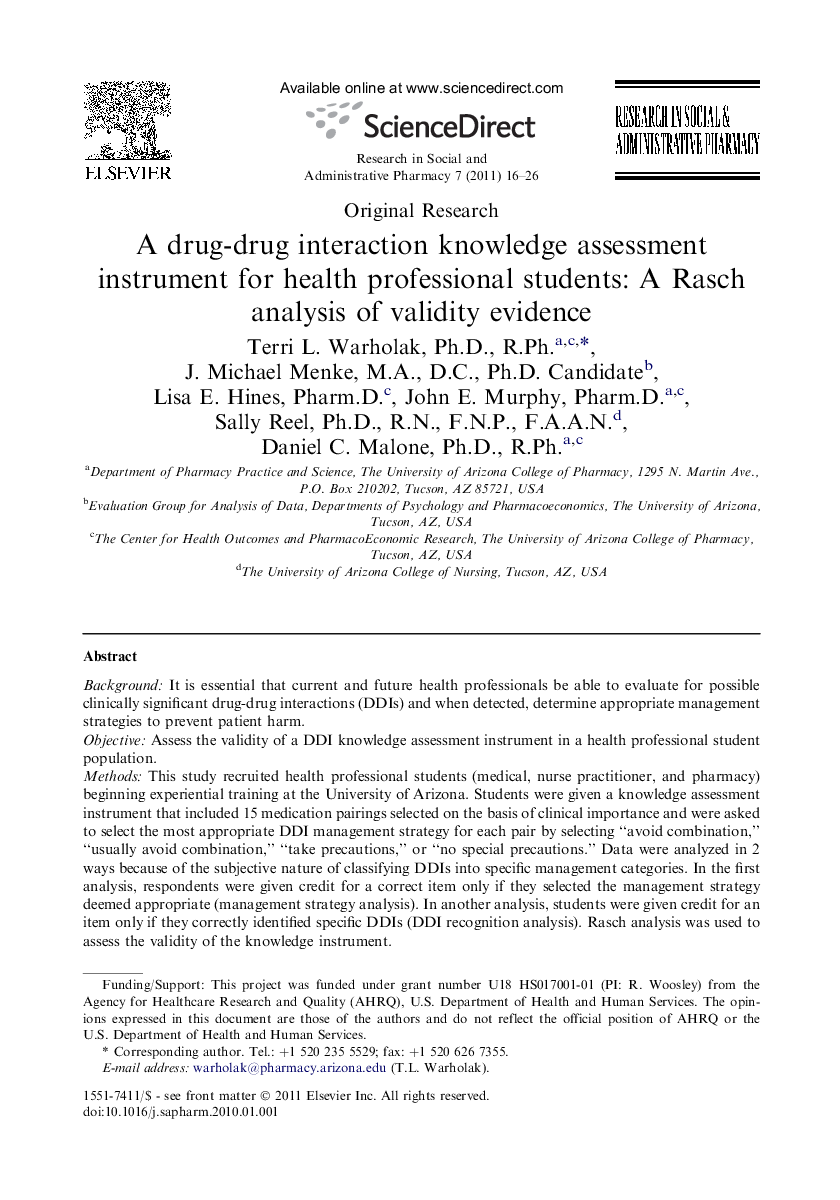| کد مقاله | کد نشریه | سال انتشار | مقاله انگلیسی | نسخه تمام متن |
|---|---|---|---|---|
| 2508663 | 1117618 | 2011 | 11 صفحه PDF | دانلود رایگان |

BackgroundIt is essential that current and future health professionals be able to evaluate for possible clinically significant drug-drug interactions (DDIs) and when detected, determine appropriate management strategies to prevent patient harm.ObjectiveAssess the validity of a DDI knowledge assessment instrument in a health professional student population.MethodsThis study recruited health professional students (medical, nurse practitioner, and pharmacy) beginning experiential training at the University of Arizona. Students were given a knowledge assessment instrument that included 15 medication pairings selected on the basis of clinical importance and were asked to select the most appropriate DDI management strategy for each pair by selecting “avoid combination,” “usually avoid combination,” “take precautions,” or “no special precautions.” Data were analyzed in 2 ways because of the subjective nature of classifying DDIs into specific management categories. In the first analysis, respondents were given credit for a correct item only if they selected the management strategy deemed appropriate (management strategy analysis). In another analysis, students were given credit for an item only if they correctly identified specific DDIs (DDI recognition analysis). Rasch analysis was used to assess the validity of the knowledge instrument.ResultsA total of 165 of the 226 eligible health professional students completed the DDI knowledge assessment (73% response rate). The mean score for management strategy analysis was 3.82 out of 15, whereas DDI recognition analysis produced a higher average (mean = 6.55). Good reliability was demonstrated in both strategies, and no ceiling or floor effects were observed. Some construct underrepresentation occurred with both scoring strategies, and some mistargeting was identified when analyzing the management strategy.ConclusionsAlthough improvements in construct representation may be beneficial, the instrument used demonstrated good reliability and validity and could be used by educators to assess and improve DDI knowledge. The ability of the participants to identify DDIs and select an appropriate management strategy was low. These results support the need for additional DDI education in this institution's health curricula.
Journal: Research in Social and Administrative Pharmacy - Volume 7, Issue 1, March 2011, Pages 16–26